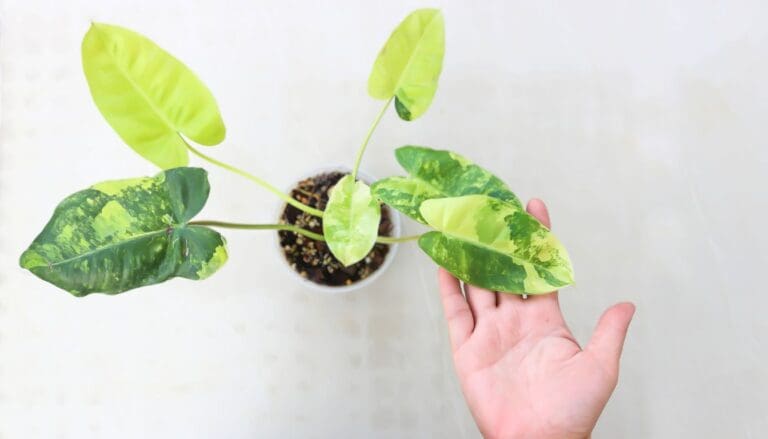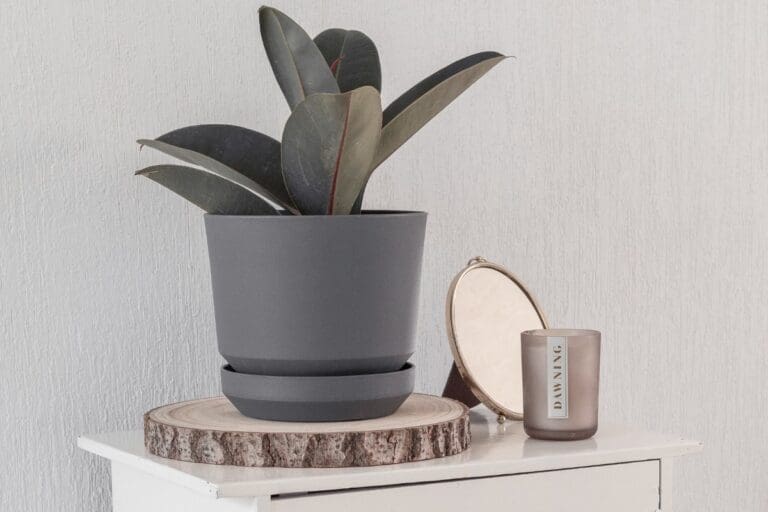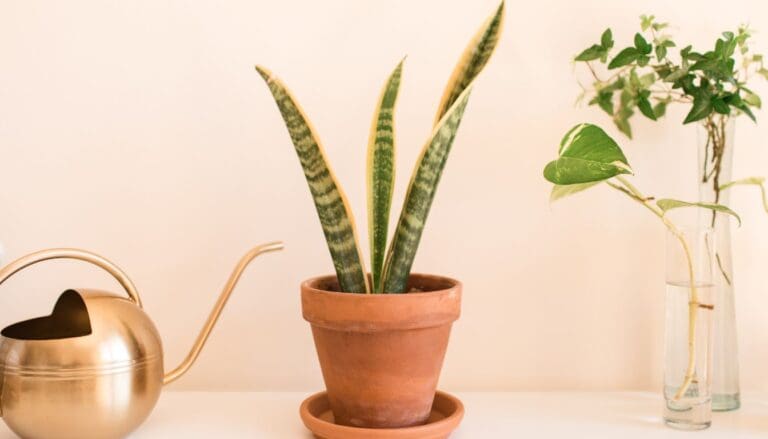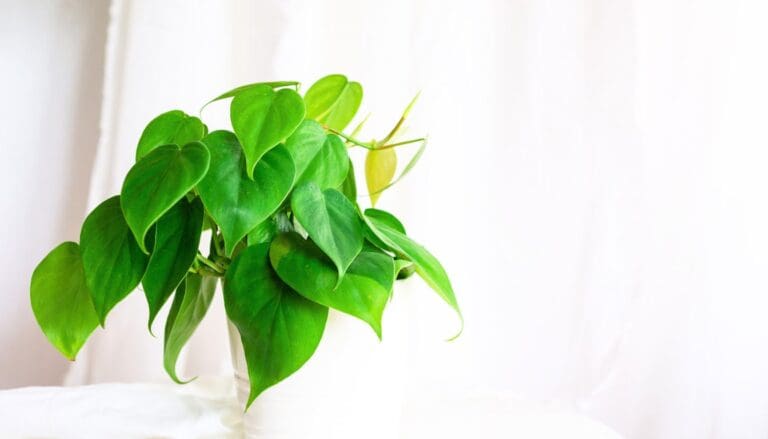9 Reasons Why Your Peace Lily Is Turning Yellow!
The peace lily plant belongs to the tropical rainforest regions, and they are famous for their shiny green foliage and white flowers. But these beautiful green leaves turning yellow can seem discouraging. But the good thing is once you detect the reason behind it, you can save your remaining peace lily plant from turning yellow.
The primary problems that lead to yellow leaves in peace lilies are irregular watering, inadequate light, and improper fertilization. Other reasons include lack of nutrients, temperature stress, infestations, and diseases. Apart from these, some leaves naturally turn yellow as they age.
Aging is natural and not harmful. When your leaves start aging, the older leaves automatically fall off. You can even remove them by yourself if you dislike the sight of yellow leaves on your plant.
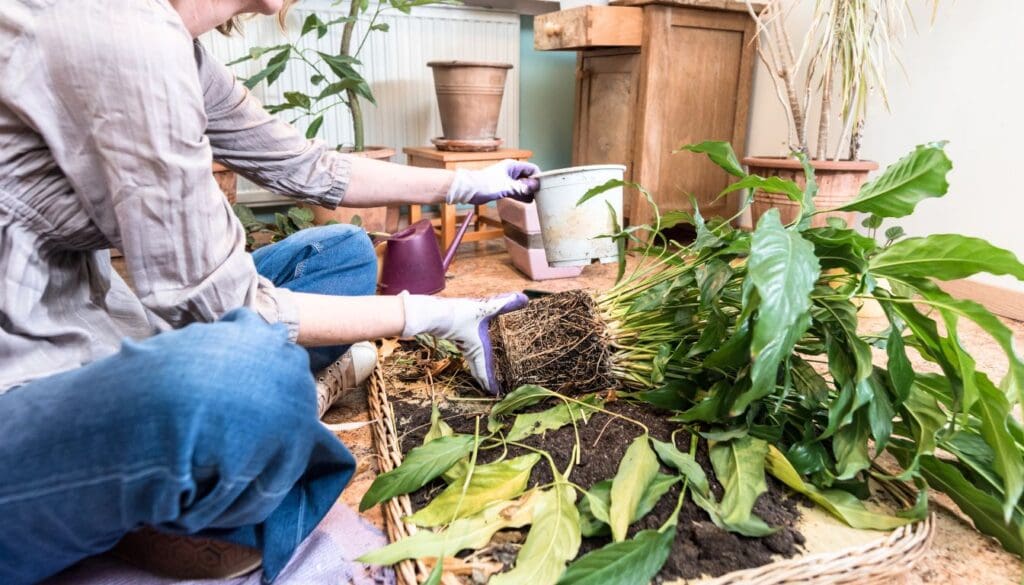
Keep reading this article to know how you can determine the actual reasons behind yellow leaves in your Peace Lilies and the possible remedies.
Please note: Simplify Plants is reader-supported. Some links in the post are affiliate links and I get a commission from purchases made through links in the post.
Causes of yellow leaves in peace lilies
Yellow leaves in the peace lilies are a result of an unhealthy plant. There are several reasons behind yellow leaves:
- Watering issues
- Poor water quality
- Improper light
- Poor nutrition
- Temperature issues
- Transplant shock or Repotting
- Pest infestations
- Diseases
- Natural aging of old leaves
Let’s discuss these reasons in detail.
Watering Issues
One common reason behind the yellowing of the leaves in Peace Lilies is improper watering. Both overwatering and underwatering can be the cause of yellow leaves.
If the leaves limp, create water-soaked spots with yellow haloes and yellow color spreads, it is probably due to overwatering. When the leaves become dry and crispy yellow, then it is due to under-watering.
Overwatering

Overwatering problem is common for all houseplants, and it happens when you constantly water your plant without checking the moisture level of the soil.
It is true that every plant needs a good amount of water to grow but overdoing it will only harm the plant.
Overwatering also happens if your pot or the soil does not have a sound drainage system.
If the container or pot does not have drainage holes or the soil mix is heavy or has too much clay, it will hold excess water, causing overwatering.
Overwatering makes the roots stay in the water for a long time, due to which the roots don’t get enough air and oxygen and suffocate, leading to root rot.
You need to give a daily check to your peace lily to detect the problem. Yellow leaves don’t mean only watering can be the problem. It would be best if you observed closely to determine the symptoms. Then take possible actions.
Underwatering
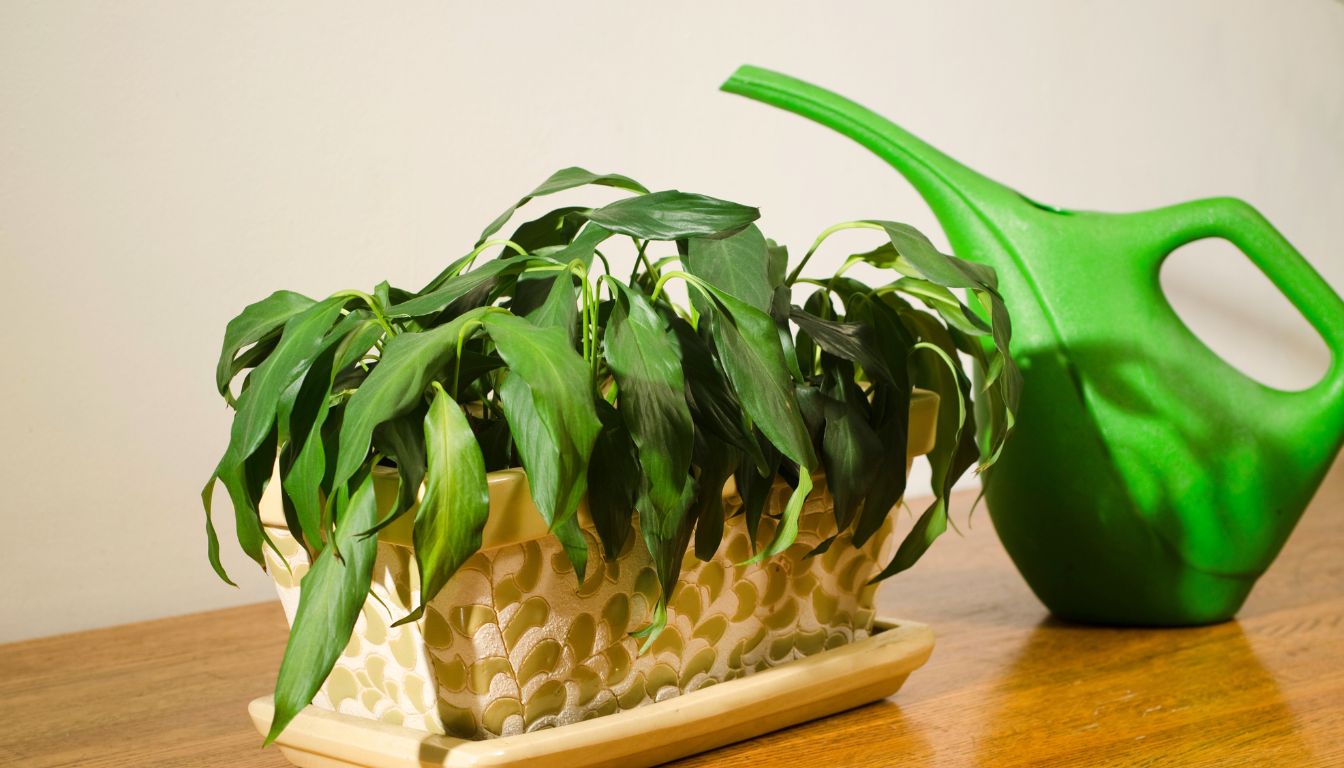
It happens most of the time that you try to protect your peace lily from overwatering but end up watering less. If you observe your peace lilies closely, you will notice they start wilting when they need water.
They struggle to function if they are not getting enough water, and the leaves start turning yellow. They do not like being in drought either. Starving them of water makes it difficult for them to receive the nutrients from the soil and roots, which results in yellow leaves.
Another reason behind underwatering might be that the soil drains more water than required, and the soil cannot hold enough moisture. Using such soil mix for the plant causes moisture deficiency, resulting in yellow leaves.
Also read: How Often Should A Peace Lily Be Watered? (Peace Lily Water Requirements)
Poor water quality
Poor water quality can cause yellow leaves in the Peace Lilies. Some of the water contains fluoride and chlorine. Chlorine is known for causing yellow leaves in plants.
Using tap water causes yellow leaves in the plant because it contains a high amount of chlorine and fluorine. Using water from a water softener too can be the reason.
Improper light
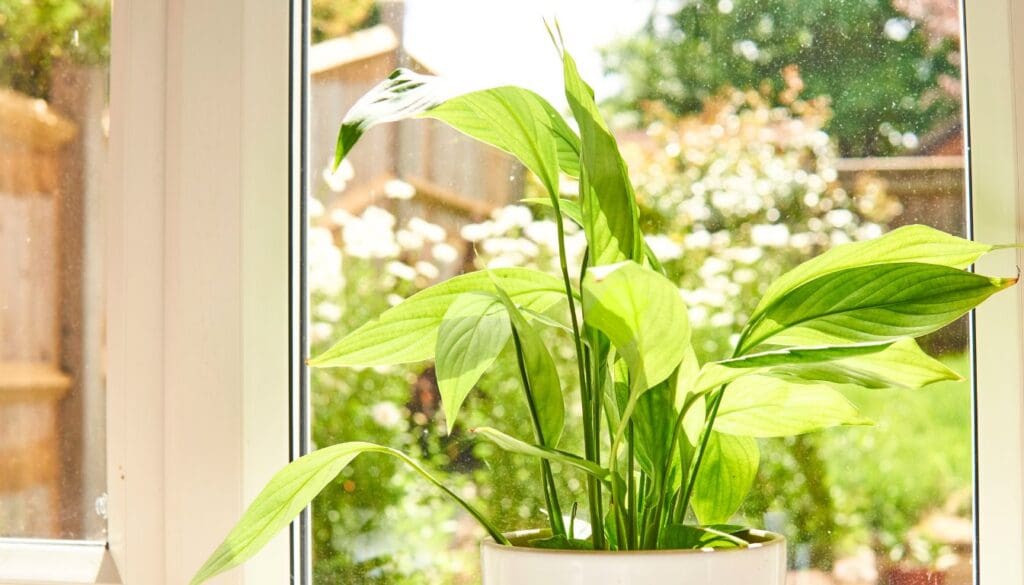
These plants are the rare ones that can tolerate low light conditions. However, that doesn’t mean you should place your peace lily in the dark. They need indirect sunlight for photosynthesis.
Too much light will cause yellow leaves in the plant. The hot scorching heat of the sun can cause sunburns in the plant leading to brown patches.
Similarly, if the plant is not receiving enough light, it won’t perform photosynthesis, which gives them shiny and lush green leaves. Lack of light will cause pale and yellow leaves. Low light will also result in zero flowerings in the plant.
Also read: What Kind Of Light Does A Peace Lily Need? (Peace Lily Light Requirements)
Lack of nutrients

Lack of nutrients is a common reason for yellow leaves. Every living thing needs food to survive. When the peace lily is not getting enough nutrients, they start looking pale and yellow.
It happens when you are not giving your plant enough fertilizer. Nutrients help the plant grow well, promote flowering, and the leaves grow healthy and green.
The three critical nutrients for the growth of the plant are nitrogen, phosphorous, and potassium. Let us see the roles of nutrients in Peace Lilies:
Nitrogen: It is an essential nutrient that:
- Stimulates growth.
- Suitable for leaf development.
- Main chemical needed for photosynthesis.
The deficiency of nitrogen results in failure of photosynthesis, and the plant won’t be able to create any food. The leaves will not remain green, and they will start turning pale.
Phosphorous: Important for:
- Vigorous growth
- Promotes growth of flowers
- Encourages development of roots and stems
The plant will suffer from bad development of the roots, stems, and flowers.
Potassium – It is necessary because it:
- Gives strength to the plant
- Regulates water distribution among the cells
- Resists diseases and improves the health of the plant and flowers
The potassium deficiency can cause a weak immunity system, and the plant will become prone to diseases.
The peace lily also needs small amounts of nutrients like calcium, iron, and magnesium to help the plant and the flowers develop better and healthy. Or else your plant will suffer from yellow leaves.
For example, lack of magnesium or iron in your Peace Lilies will cause yellow leaves with green veins.
Also read: What Kind Of Fertilizer Does A Peace Lily Need? (Peace Lily Fertilizer Ratio)
Temperature issues
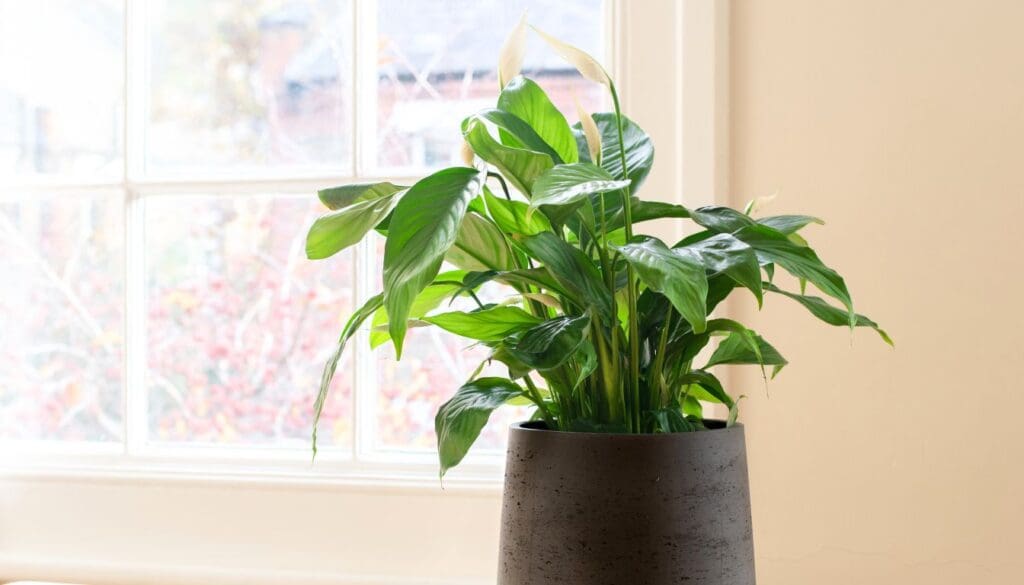
The ideal temperature for Peace Lilies ranges between 65-85°F during the day, which is why they are indoor plants. If your plant is suffering from yellow leaves, it means they are being exposed to high or low temperatures.
Peace Lilies do not enjoy cold weather, and letting them remain on a cold porch will cause yellow leaves in the plant, and this situation can worsen if not taken care of. These plants cannot withstand temperatures below 45°F.
Also Read: What Temperature Is Best For Peace Lily? (Ideal Range+How To Maintain)
Transplant shock
Peace lilies do not need much repotting unless they are experiencing root rot. They also need to be transplanted if they have grown bigger and need to be moved in other big pots so that the roots can grow freely without any suffocation.
But sudden transplantation is a shock to them which can result in the yellowing of the leaves. But the shock doesn’t remain for long. Just be patient and give your plant some time to get adjusted to the new environment.
Pest infestations
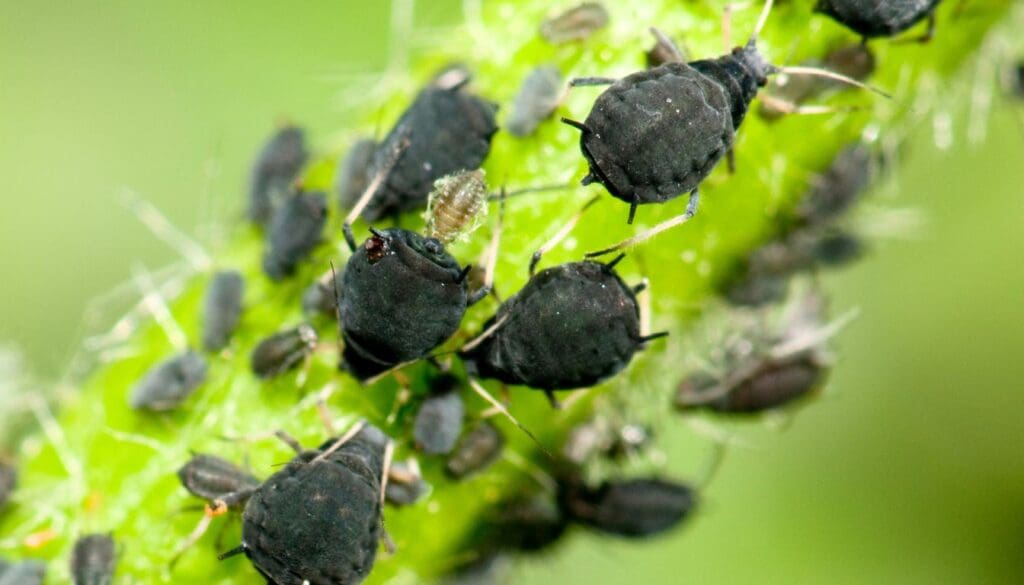
Peace Lilies rarely get attacked by pests. Bugs will stay away if your peace lily is kept clean and healthy. Healthy plants are not vulnerable to pests.
But if the conditions are ideal for bugs, the main bugs that attack the plant are mealy bugs, aphids, spider mites, and scales. These sap-sucking bugs suck out all nutrients, leaving the plant lifeless, resulting in pale and yellow leaves.
Pests can make quick colonies. When you notice yellow leaves due to pest attacks, these bugs might have already made colonies in your plant.
Most of the time, the pests attack the plant when the plant is overwatered, underwatered, poorly placed, or the health of the plant is compromised.
Also read: Do Peace Lilies Like To Be Root Bound? (+When To Repot)
Diseases
Lastly, the peace lilies get yellow leaves due to some diseases due to fungus and pathogens attracted either by damp, cold, and humid conditions or transferred by some outside factors, like the wind.
Some diseases are:
Cylindrocladium Root and Petiole Rot: This happens mainly due to overwatering or warm and moist conditions. The first symptoms are yellowing of the lower leaves and wilted foliage. The lower petioles also get affected.
Dasheen Mosaic Virus: It results in a mosaic pattern of yellowish to light green color on the surface of the new leaves. It also causes stunted growth. It spreads through bugs, infected potting soil, or garden tools.
Pythium Root Rot: It is caused by a water mold Pythium spp. The initial symptoms are yellowing of the leaves and wilted leaves. It is the same as the cylindrocladium root rot and is difficult to differentiate the diseases.
One main difference is, in the Pythium root rot, the petioles remain unaffected.
Also read: How To Treat Root Rot In Peace Lily? (Signs, Identification & More)
Natural Aging
The leaves that have completed their lifecycle and turned old enough will naturally turn yellow. These will not harm your plant, and you do not have to worry about these aged leaves.
These leaves will ultimately drop off from your plant when the time comes, as the plant concentrates more on the new leaves than the old ones.
If you do not like these yellow leaves, you can remove them yourself. Cut them will sterilized scissors or pruners at the base of the stem.
How to fix yellow leaves in Peace Lilies?
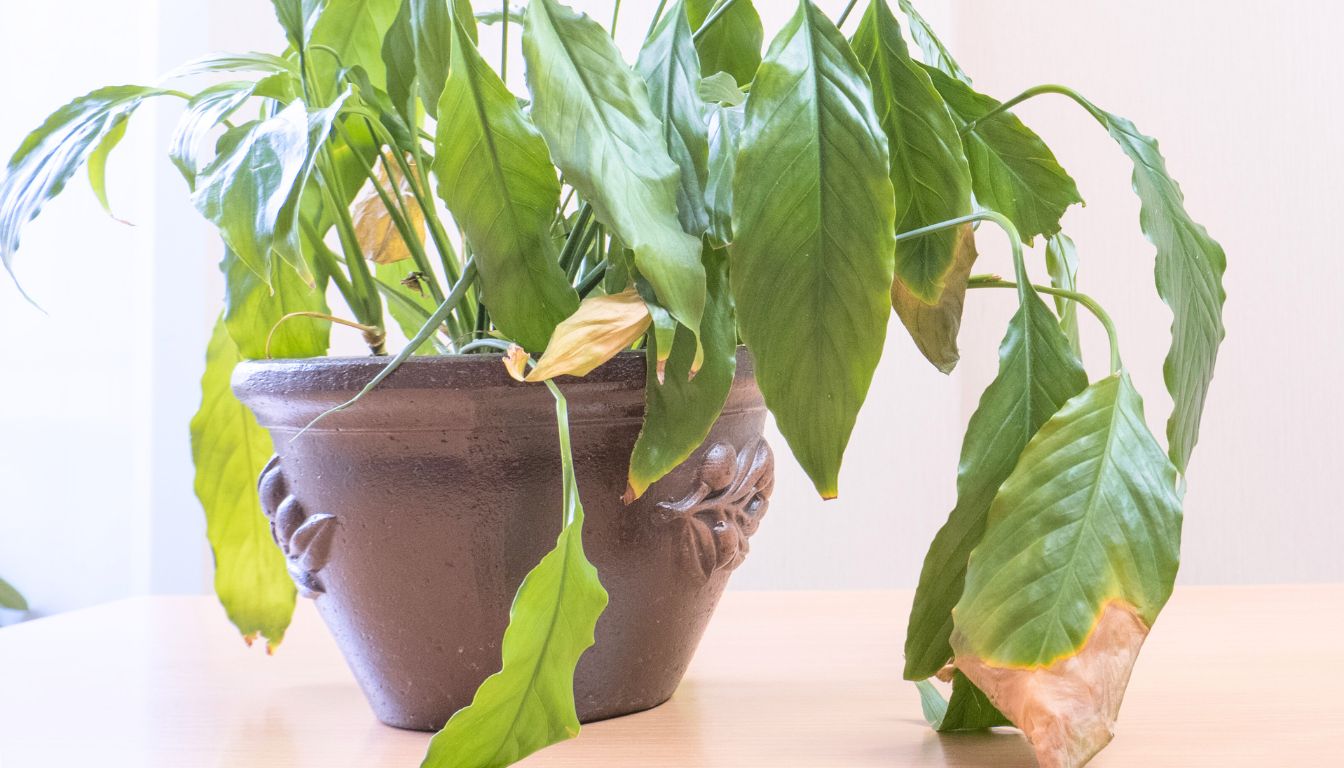
Along with problems comes the solutions too. For all these problems, we have discussed some fixations below:
1. Provide the right amount of water.
The best thing to save your plant from both overwatering and under watering is to plant them in a lightweight soil mix, which can drain excess water and at the same time retain enough moisture needed by the plant.
Ensure that the pot you are using must have working drainage holes in them to drain excess water.
For the right frequency, let the soil dry up in between each watering. Let the roots dry up before watering. It will help in preventing root rot in the plant. You can check if the soil from the top (about 1 to 2 inches) has dried up or not. Then you can opt for the next watering.
While watering thoroughly, let the excess water drain out of the drainage holes from the bottom of the pot. Never let the plant stand on a pool of water. This helps in securing the correct quantity of water for the peace lilies during every watering.
2. Check the water quality.
Along with quantity, a quality check of the water is also essential. Giving your peace lily good quality water prevents yellow leaves in the plant.
Before watering, it is better to let the water sit overnight, reducing the chlorine and fluoride. It prevents yellow leaves and root burn.
Avoid using tap water. Use rainwater or distilled water for watering your Peace Lilies. You must use room temperature water. Also, avoid using soft water.
3. Fix the lighting.
Peace Lilies grow best under indirect sunlight. Avoid keeping your plant near the window if direct sunlight penetrates through it. You can use curtains to make filters for your plant or move it into some shaded place.
It is best to place your peace lily near a south or west-facing window.
These plants can tolerate low light but avoid darkness. They need light for better performance of photosynthesis and healthy growth. You can use artificial lights for good plant growth if they are facing low light issues.
4. Provide enough fertilizer.
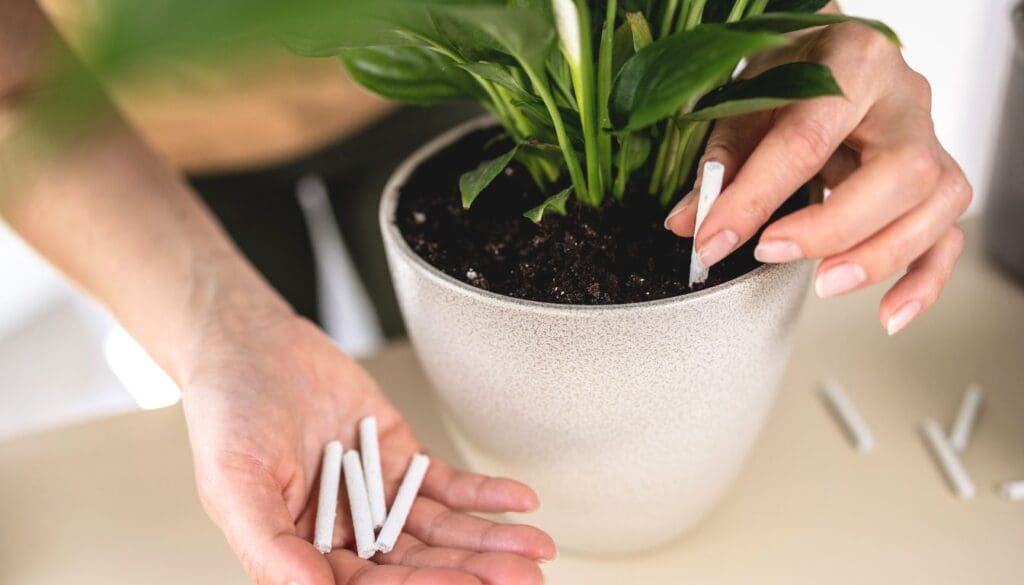
Peace lilies need fertilizers to remain evergreen and healthy. Planting them in organic soil will help them get all the essential nutrients for their healthy growth. But still, they will need fertilizers for remaining strong and producing flowers.
A balanced, water-soluble fertilizer with an NPK ratio of 20-20-20 will work well for your plants. They will give good foliage and vigorous blooms to your peace lilies.
5. Maintain proper temperature.
Peace lily will grow best between the temperatures 65-85°F during the day and a drop of 10°F during the night. Try to keep your peace lily under such temperatures.
Too high or low temperatures will cause yellow leaves on your peace lily.
If you have placed your peace lily on the balcony, immediately bring it indoors, especially during cold, drafty conditions.
Place your peace lily in areas where it can get warm temperatures to survive and remain unharmed. But keep it away from heaters or radiators.
6. Repot your peace lily.

If you want to repot your plant, try doing it during the month of spring seasons. Spring is the growing season of these plants. Repotting during the spring will help the plant adjust to the new pot, soil, and surroundings.
If repotting is necessary and it is not the growing season, your plant may have yellow leaves. In such conditions, avoid all things that can harm your plant.
Be patient and give your plant some time to get adjusted to the new environment. It will soon become healthy once it gets used to the environment.
Also read: Do Peace Lilies Like To Be Root Bound? (+When To Repot)
7. Get rid of pests and fight diseases.
To get rid of pests like mealy bugs, aphids, or spider mites, you should:
- Isolate the plant.
- Handpick the bugs (don’t forget to wear gloves).
- Water your plant with a force to wash the pests from the plant.
- Use cotton and alcohol to wipe out the pests from the leaves. Spray some alcohol in the cotton and gently wipe the leaves and stems.
- Neem oil is an excellent medicine for treating pests. Mix two tablespoons of neem oil with two cups of water. Spray and let it remain for some time. It is a natural insecticide and safe for your plant. Apply it every week until you get rid of the bugs.
- You can also use baby shampoo as bug spray. Mix one tablespoon of shampoo in a four-ounce spray bottle and fill it with water. Spray it every two days. After spraying, wait for four hours and rinse the plant with normal water.
- Herbs that have a strong scent can help you get rid of the bugs. For using, crush the herbs to get ½ cup of it, mix it with three cups of water and keep it for 24 hours. Strain the water into a bottle, add ¼ teaspoon of mild dish soap, shake it well, spray it to your plant once a day, and continue using it until no bug is left. Herbs you can use are basil, peppermint, lavender, sage, and rosemary.
- You can use mild dish soap spray to get rid of bugs. Add one tablespoon of dish soap with one quarter spray bottle. Fill the bottle with water. This is a 2% solution. It will help to get rid of the bugs.
How to prevent yellow leaves in peace lilies?

While buying Peace Lilies from the market, you might not know about its condition, so keep it isolated for some time after bringing it home. Once you are aware of its good health, keep it with other plants.
Do not keep the peace lily in direct sunlight. Keep it under semi-shade.
You can use curtains to make filters for direct sunlight. Place the peace lily in a south or west-facing window for good results.
Before watering:
- Let the soil dry up, especially 1-2 inches of the topsoil.
- Poke your finger into the soil to understand the moisture of the soil.
- Leach out extra water to prevent soggy soil.
The leaves that have turned yellow cannot be revived, but still, they can be beneficial. Do not throw away the plant. Prune the yellow leaves and start treating the plant to get more green leaves.
Note: Growing plants in your home is all about trial and error. Do not hesitate to use different measures for your plants. It will help you know the best possible care and needs for your plant.
Ref: ScienceDirect, NCBI, University of Vermont, Nationalgeographic, NC state university, University of Florida, The University of Arkansas, Queensland Government.
Recommended Garden Supplies
| Product Image | Our Recommended Gardening Supplies | Check Offers! |
|---|---|---|
Top Top
Top
Top
Top
Top
Top
Top
Top | rePotme Houseplant and Tropical Classic Potting Soil Mix | Check Offer On Amazon |
 Top
Top
Top
Top
Top
Top
Top
Top | Espoma Organic Indoor Plant Food | Check Offer On Amazon |
 Top
Top
Top
Top
Top
Top
Top
Top | GooingTop LED Grow Light 6000K Full Spectrum Clip Plant Growing Lamp | Check Offer On Amazon |
 Top
Top
Top
Top
Top
Top
Top
Top | Soil Moisture Meter | Check Offer On Amazon |
 Top
Top
Top
Top
Top
Top
Top
Top | Govee Hygrometer Thermometer, Bluetooth Enabled! | Check Offer On Amazon |
 Top
Top | LEVOIT Humidifiers for Large Room(Best For Plants) | Check Offer On Amazon |
 Top
Top
Top
Top
Top
Top
Top
Top | Upgraded DIY Automatic Drip Irrigation Kit, 15 Potted Houseplants Support | Check Offer On Amazon |
 Top
Top
Top
Top
Top
Top
Top
Top | Stainless Steel Heavy Duty Gardening Tool Set | Check Offer On Amazon |
 Top
Top
Top
Top
Top
Top
Top
Top | Bonide Insecticidal Soap | Check Offer On Amazon |
 Top
Top
Top
Top
Top
Top
Top
Top | Bonide 32 oz Spray Neem Oil for Organic Gardening | Check Offer On Amazon |
 Top
Top
Top
Top
Top
Top
Top
Top | Garden Safe Fungicide | Check Offer On Amazon |

